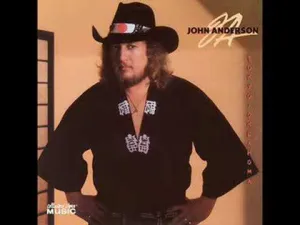John Anderson Seminole Wind
John Anderson's "Seminole Wind": A Deep Dive into Country Music's Heart
Country music has a unique way of weaving stories into tunes, and John Anderson’s "Seminole Wind" is a classic example. Released in 1992, this song has continued to resonate with fans across generations. Its significance is evident not just in its commercial success, but also in the way it connects with listeners on an emotional and cultural level.
The Story Behind the Song
"Seminole Wind" is more than just a melody; it's a narrative that captures the environmental and cultural struggles of Florida's Seminole tribe. John Anderson, who has deep roots in Florida, uses his platform to shed light on the profound changes experienced by landscapes he cherished as a child.
The song’s lyrics describe the plight of the Seminole people and the environmental impact of modern development on Florida’s natural landscape. It's a call to conscience, urging listeners to reflect on the balance between progress and preservation.
Musical Composition
The haunting melody of "Seminole Wind" is driven by a compelling rhythm and Anderson’s distinct deep voice. The song beautifully combines traditional instruments with elements typical of country music, such as the fiddle, which adds a layer of authenticity and nostalgia.
The strength of Anderson's delivery, mixed with the poignant lyrics, ensures that the song stays with the listener long after it ends. It’s a fine blend of heartfelt storytelling and musical craftsmanship that makes "Seminole Wind" a timeless piece.
Impact and Legacy
Upon its release, "Seminole Wind" climbed the charts swiftly, reaching No. 2 on the Billboard Hot Country Songs. This success helped solidify John Anderson's place in country music history. Beyond commercial performance, the song has been praised for its cultural impact, bringing awareness to environmental and indigenous issues.
Decades after its debut, "Seminole Wind" continues to be celebrated in various forms. It's often covered by other artists, reflecting its enduring influence in the genre. The song has also found a place in many documentaries and projects that aim to discuss conservation and indigenous rights.
John Anderson: The Artist
John Anderson's career began in the late 1970s, but it wasn't until the 80s and 90s that he truly became a powerhouse in country music. With a voice that is both rich and emotive, Anderson has a knack for bringing stories to life through his music.
"Seminole Wind" stands out as perhaps his most significant contribution to music, though his catalog is full of songs that speak to everyday life, love, hardship, and joy. Anderson’s skillful songwriting and passionate performances have earned him a loyal fanbase and critical acclaim over the years.
The Cultural Significance
The environmental and social themes explored in "Seminole Wind" resonate particularly strongly today. As discussions around climate change, indigenous rights, and environmental conservation become increasingly urgent, songs like Anderson’s remind us of the importance of these issues.
By capturing the beauty and the blows to Florida’s landscapes and its native communities, "Seminole Wind" contributes to the cultural conversations that push for responsibility and change. It's a work that encourages reflection on how progress can sometimes have a hefty toll on the natural world and its original inhabitants.
Conclusion
"Seminole Wind" is more than a country song; it’s a piece of musical history that speaks volumes about American culture and the pressing issues faced by its people. John Anderson's masterful storytelling and heartfelt delivery make this song a must-listen for anyone keen to understand the true essence of country music.
As we continue to navigate the complexities of societal progress and preservation, Anderson's "Seminole Wind" stands as a timeless reminder of the delicate balance we must strive to maintain. It calls us not only to appreciate country music as an art form but also to listen to the stories it tells and the lessons it imparts.
2025-01-16 13:00:16






















Leave a Reply